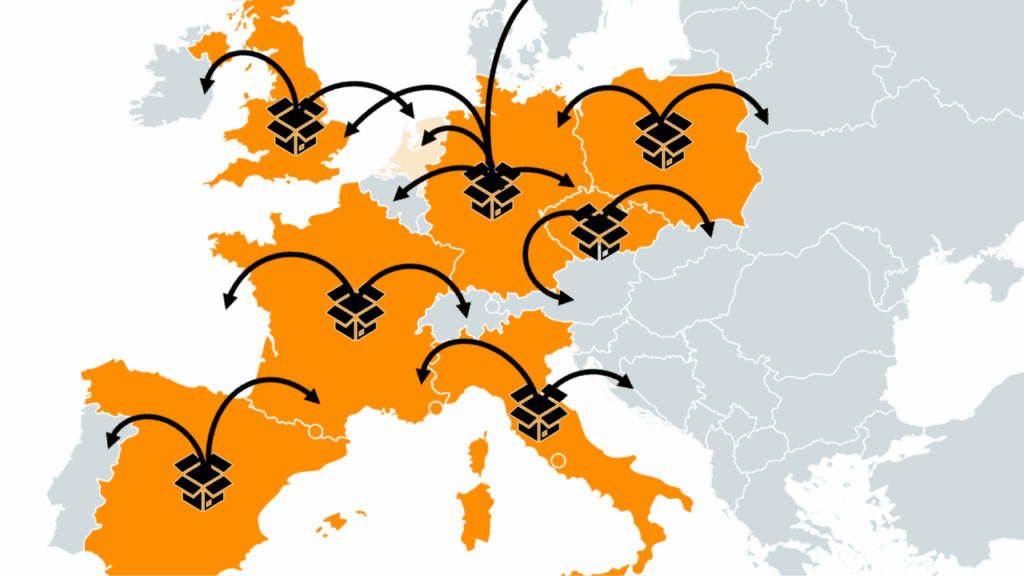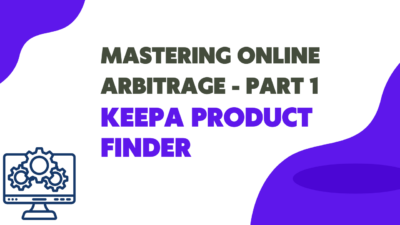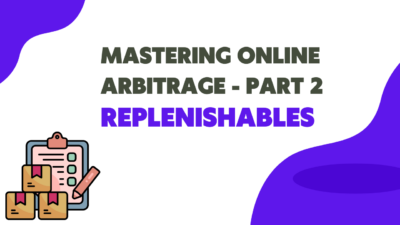Amazon 2 Amazon EU – Another String To Your Bow
Welcome back to another blog post in the Mastering Sourcing Methods series! So far, we’ve covered standard Amazon to Amazon UK sourcing and Amazon to Amazon Business, two of the most popular A2A sourcing strategies.
Today, we’re moving on to something a little different, a little more bespoke, but still extremely effective, and that is: Amazon to Amazon EU.
Amazon to Amazon EU is another string to my sourcing bow. It’s something I use regularly to top up my spend, and when you find the right deals, it can be seriously profitable.

What is Amazon to Amazon EU Sourcing?
Amazon to Amazon EU sourcing works on the exact same principles as Amazon to Amazon UK or Business in terms of deal analysis. The difference is, instead of buying from Amazon.co.uk, you’re buying products from Amazon’s European marketplaces, such as:
- Amazon Germany (DE)
- Amazon France (FR)
- Amazon Spain (ES)
- Amazon Italy (IT)
You then sell those products back onto the Amazon UK marketplace. In most cases, the discount happens on the EU site, while the UK site still holds the regular retail price. This means you can often purchase and pay for them immediately without holding or waiting to see if there’s a price recovery.
How Does It Work?
The process is very similar to your usual Amazon to Amazon purchasing process, with some differences:
- You find a product on a European Amazon store at a significantly lower price.
- You check that the UK price is still stable and selling well.
- You purchase the item from the EU Amazon store, keeping the product under the import fee tax charge (this is around 190 euro).
- You list and sell it on Amazon UK at a profit.
It is important that you keep the import fee below 190 euro to avoid import tax, this is extremely expensive and will destroy your margins. It is also important to pay in EUR, as your bank is likely to give you a better exchange rate than Amazon (most cards), saving you a couple of % ROI.
It is also important to maximise your basket to 190 euro, so you can offset the postage, making the cost per unit cheaper. Sometimes you may want to add the product to the basket and then source another product to minimise the postage Cogs.
You are also unable to use other EU marketplaces apart from the ones listed above due to other marketplaces not shipping to the UK. Another point to remember is you are unable to use a business account for EU purchases, it must be a standard Amazon account.
Ways of Sourcing Amazon to Amazon EU Deals
There are two main methods I use to find Amazon to Amazon EU deals:
1. Using a Discord Group (e.g. ProfitSweep)
As with the previous methods, using a high-quality Discord group like ProfitSweep is a game-changer.
- They have a dedicated Amazon to Amazon EU monitor.
- You’ll receive a ping notification when there’s a discount across any EU marketplace.
- Each ping includes the buy price, sell price, ROI, and sales data, so you can act fast.
Unlike some UK Amazon to Amazon deals, these don’t sell out as quickly, which gives you more time to analyse and buy.
2. Using Keepa
Keeper can also be used to find Amazon to Amazon EU opportunities. You can enable EU prices along the bottom of each product’s Keeper graph by following these steps:
- Click on the chart for the deal
- Track product
- Click “Track multiple Amazon locales”
- Select DE, FR, IT, ES

This allows you to:
- Search for high-performing UK products using Keeper filters
- See at a glance if the EU version of the product is cheaper
- Spot quick arbitrage opportunities from EU → UK
This method takes more time but gives you full control and can uncover hidden gems that bots miss.
Amazon to Amazon EU Hacks
- Keep under 190 Euro to avoid import tax
- Maximise postage cogs with other products
- Check for coupon codes and quantity discounts
- Use multiple Amazon accounts in your name, to increase purchase amount (3 is usually the max).

Pros and Cons of Amazon to Amazon EU
Pros
- Less competition — Fewer sellers are looking at EU stores, which gives you an edge.
- Immediate purchase — No need to wait for the price to recover in most cases.
- Strong profit margins — EU discounts can be generous.
- Great top-up method — Perfect when UK sourcing slows down.
Cons
- Shipping delays — Delivery from EU stores can take longer.
- Card/payment blocks — Not all UK cards work smoothly on EU sites.
- Small Quantities – Due to 190 Euro max fee quantities are limited.
- Import duty risk — Rare, but possible if VAT settings or shipping exceed thresholds.
- Returns are trickier — Sending items back to the EU is more complex.
My Personal Method
Here’s my step-by-step process when sourcing Amazon to Amazon EU deals:
- Receive the ping – Go to the deal and analyse.
- Check available quantity – I see how many units I can actually order sometimes you can get more than expected.
- Decide on urgency – If it’s a strong product, I’ll buy it immediately.
If it’s more average, I’ll add it to my basket and wait for another deal in that same region to maximise postage efficiency. - Order – Once my basket is full with deals from the same country, I’ll place the full order.
- Always pay in EUR I always pay in euros to get the best exchange rate — this saves money over time.
- Log COGS in GBP After purchase – I convert the cost to pounds and update my buy sheet.

Final Thoughts
Amazon to Amazon EU is an underrated sourcing strategy that has helped me add strong, consistent profits to my business.
It might take a little time to set up and get comfortable with, but once you’re rolling, it becomes second nature. If you’re already confident with UK Amazon to Amazon and want to take your sourcing to the next level, this is the perfect move. Try integrating just a few EU deals per week, and you’ll quickly see the benefits.
Stay tuned for the final blog post in this series — and as always, keep sourcing smart!




